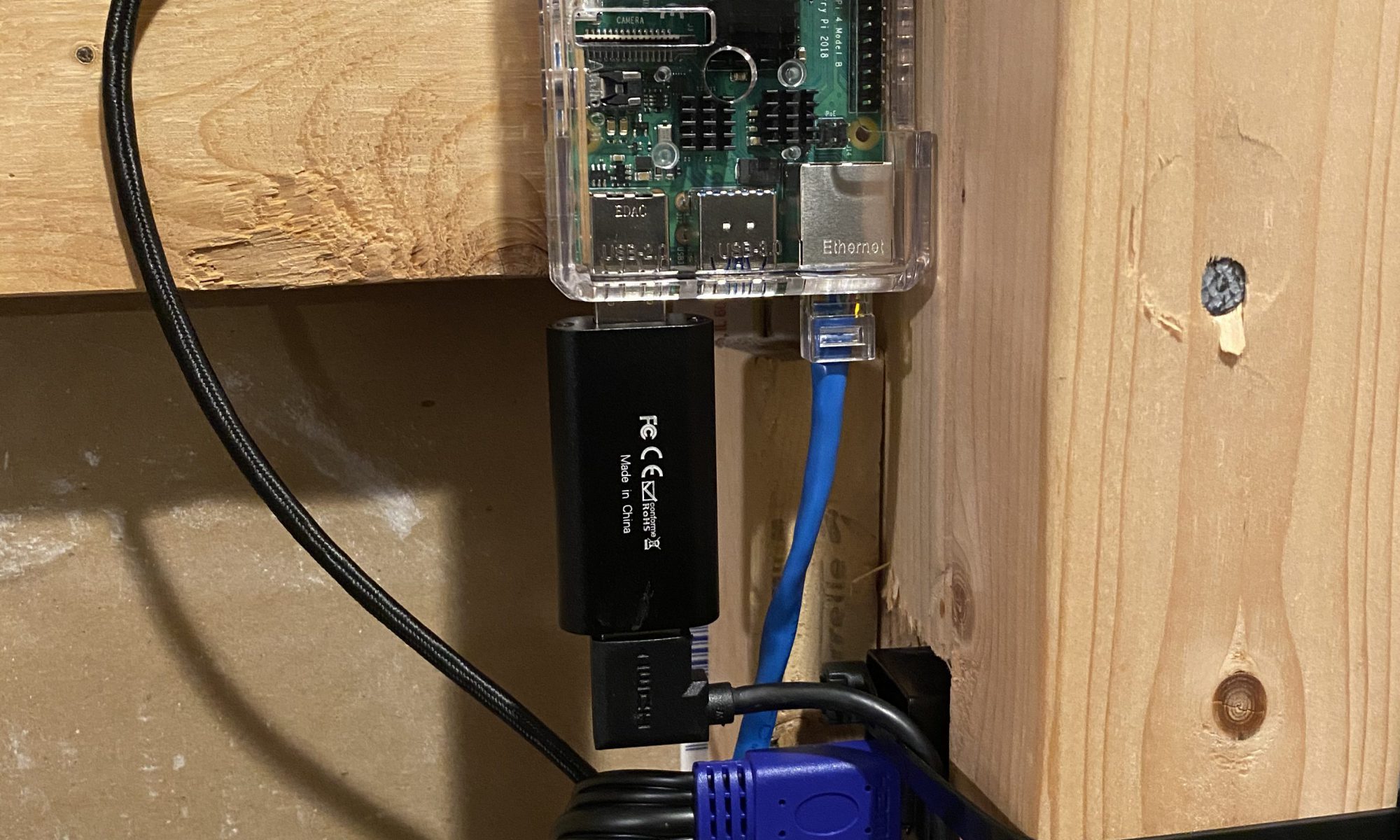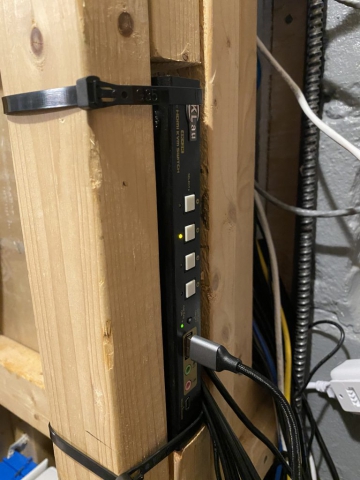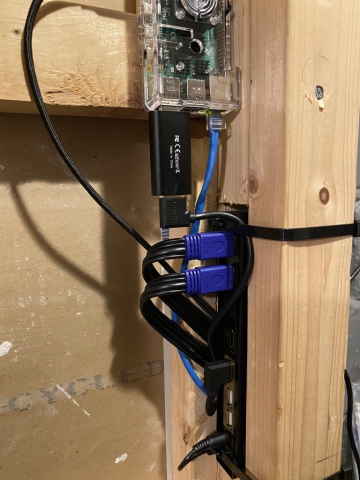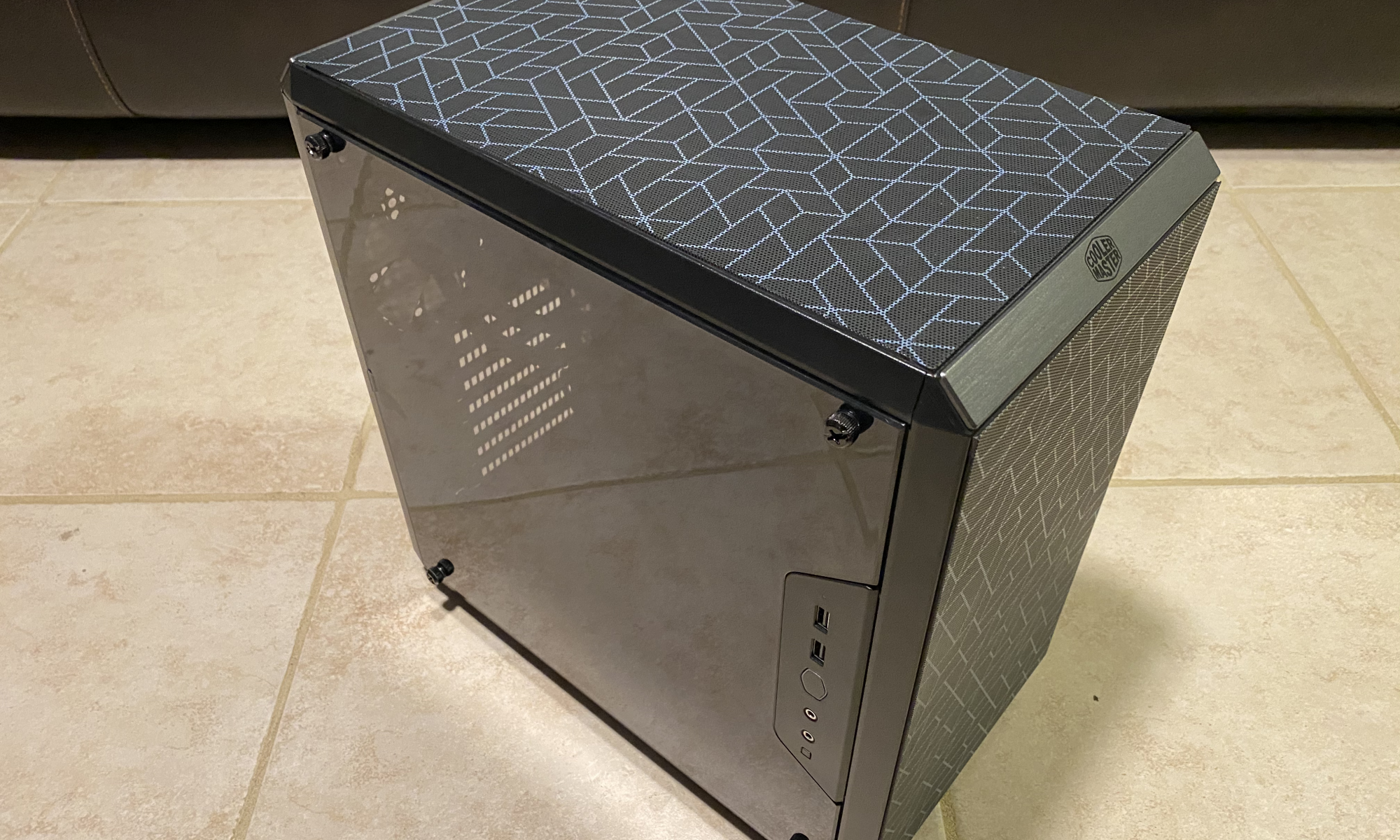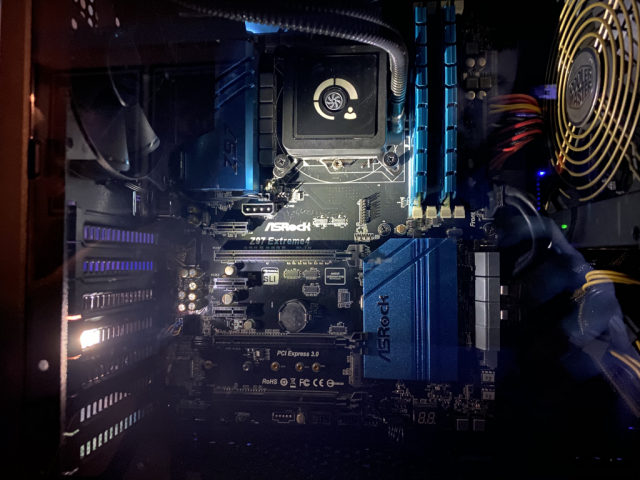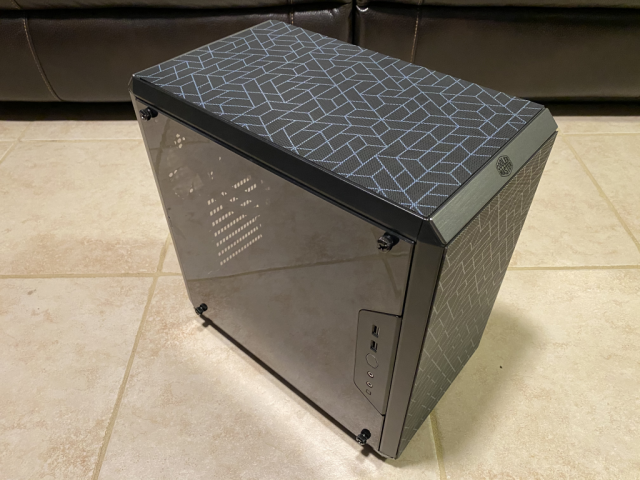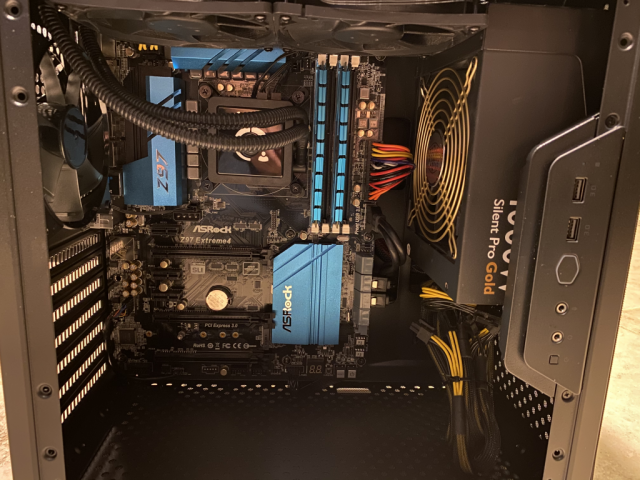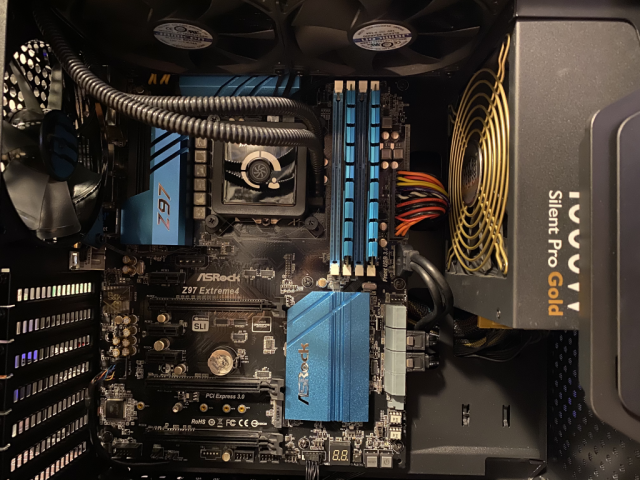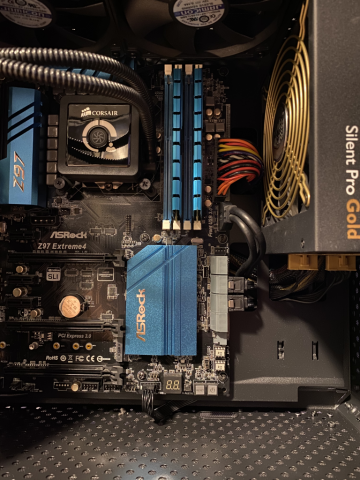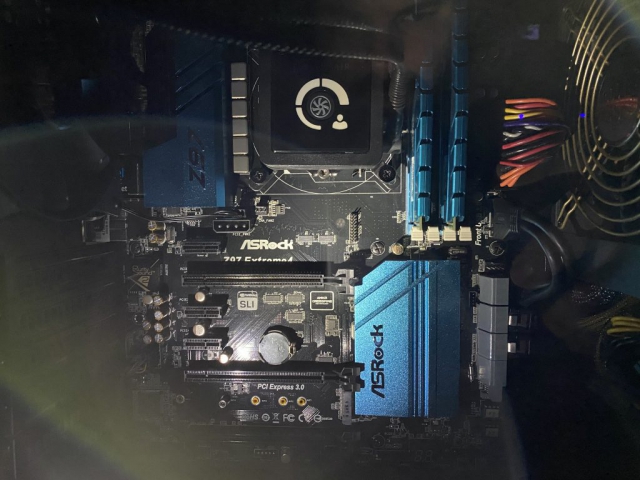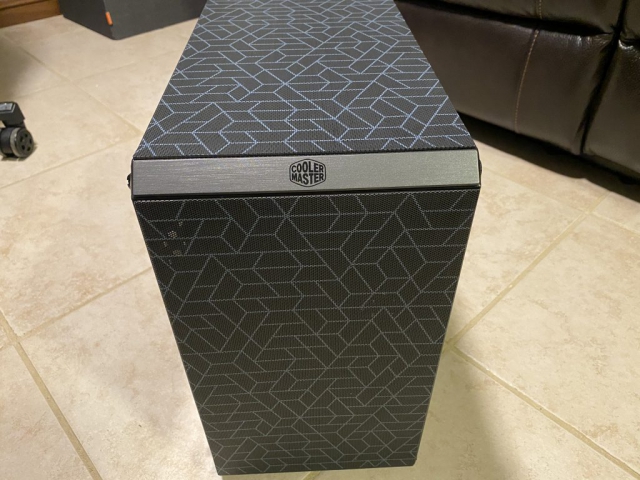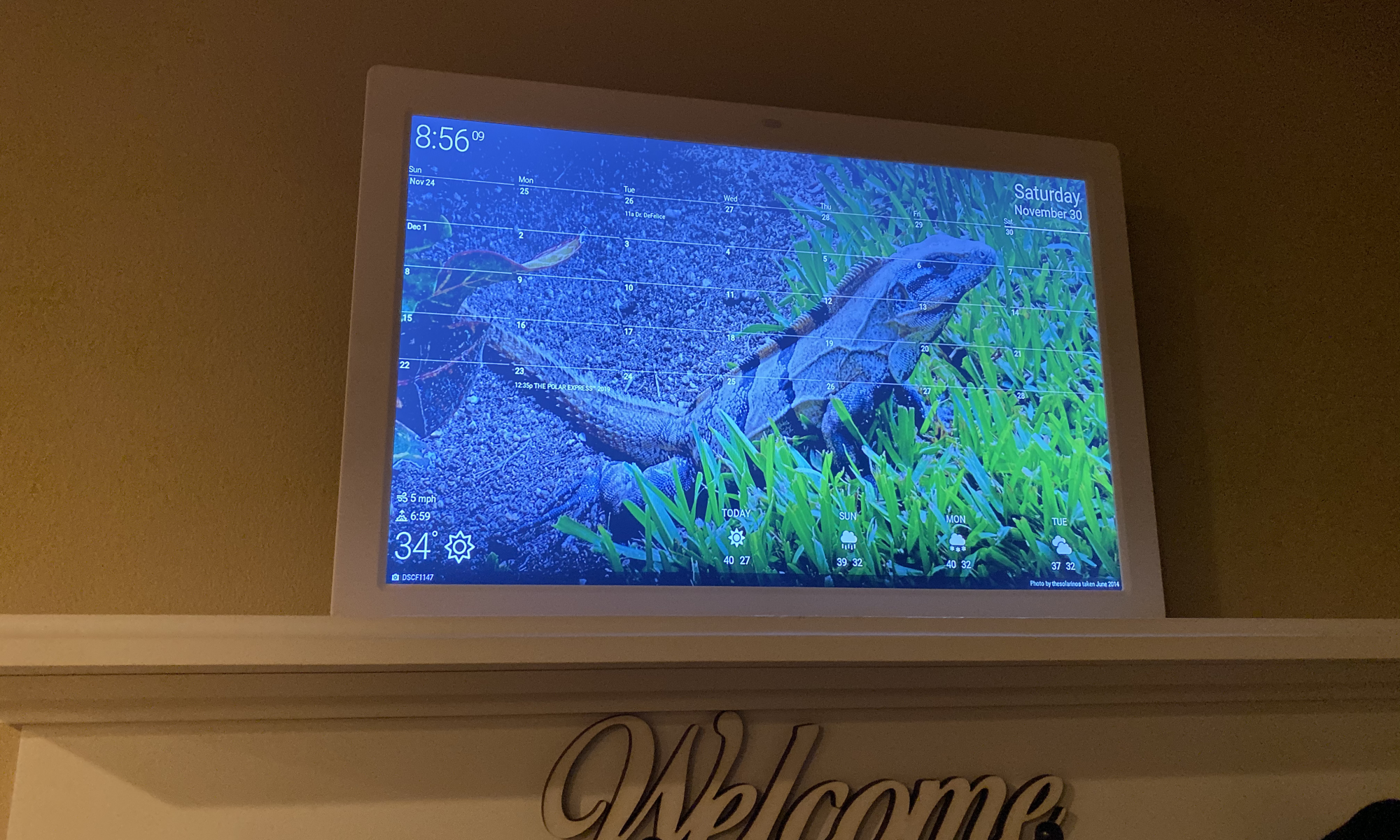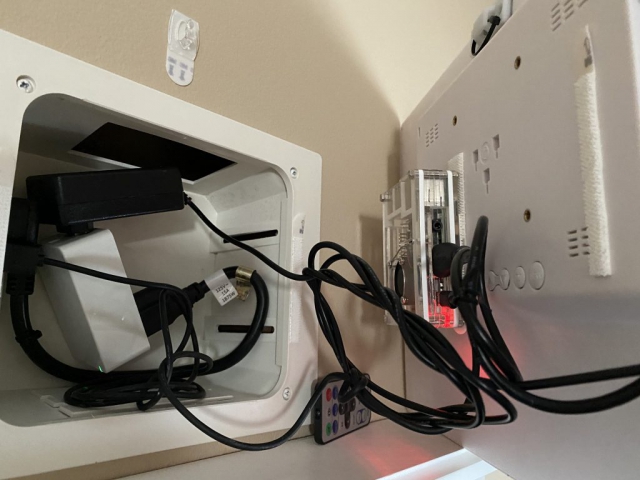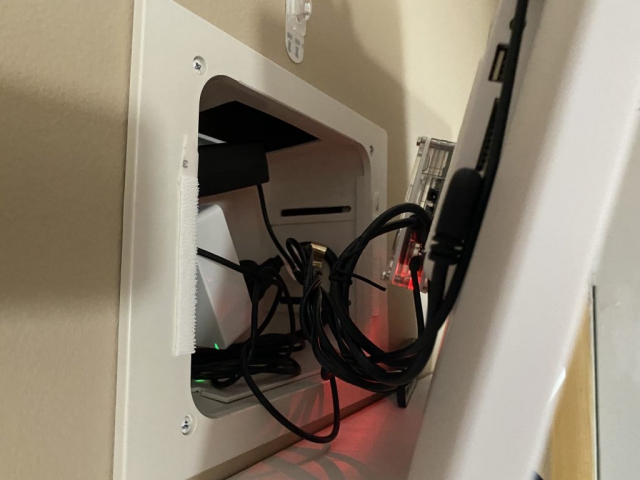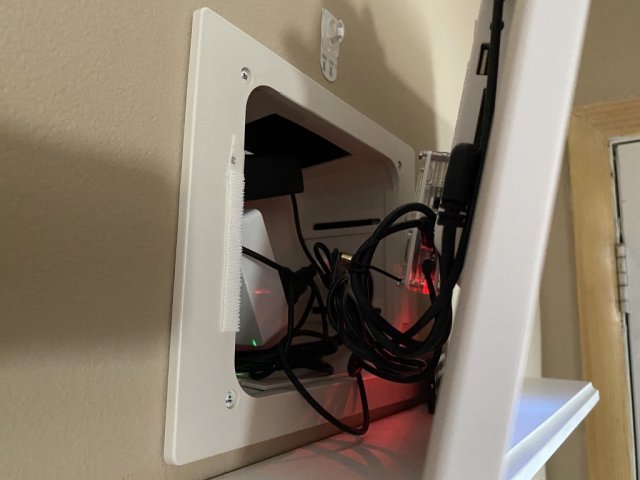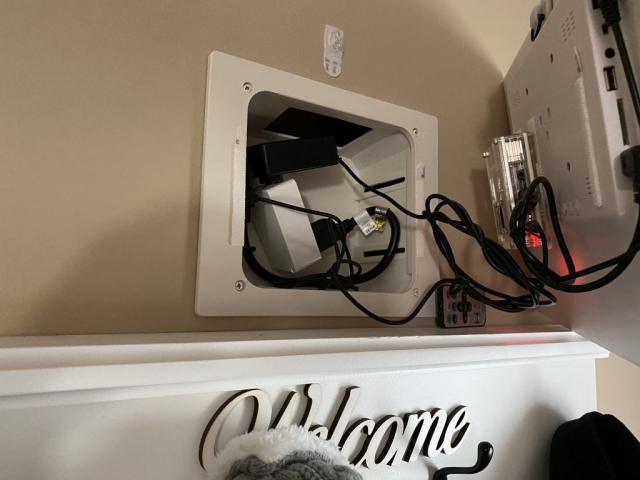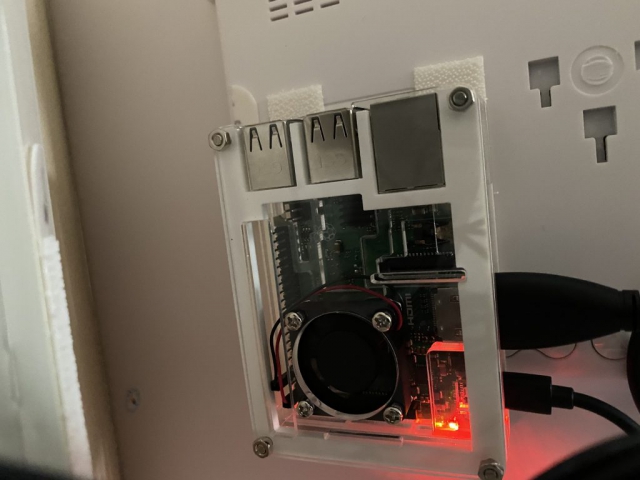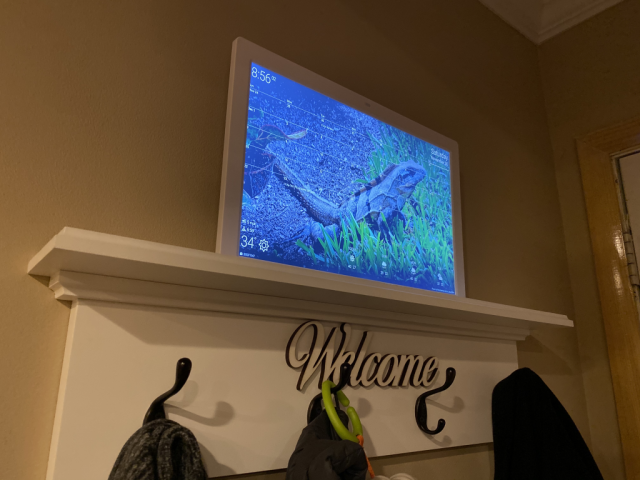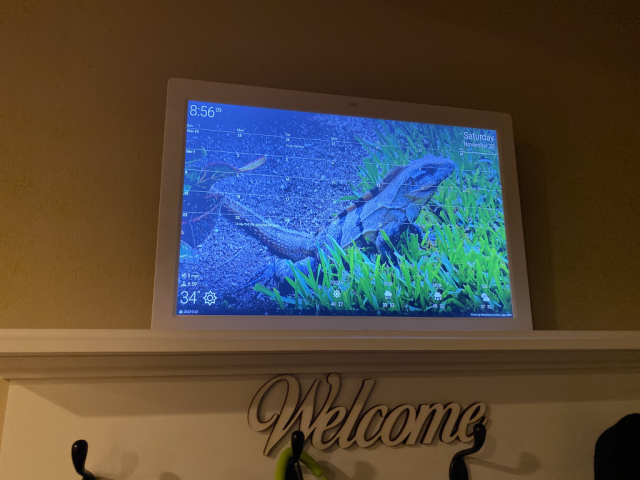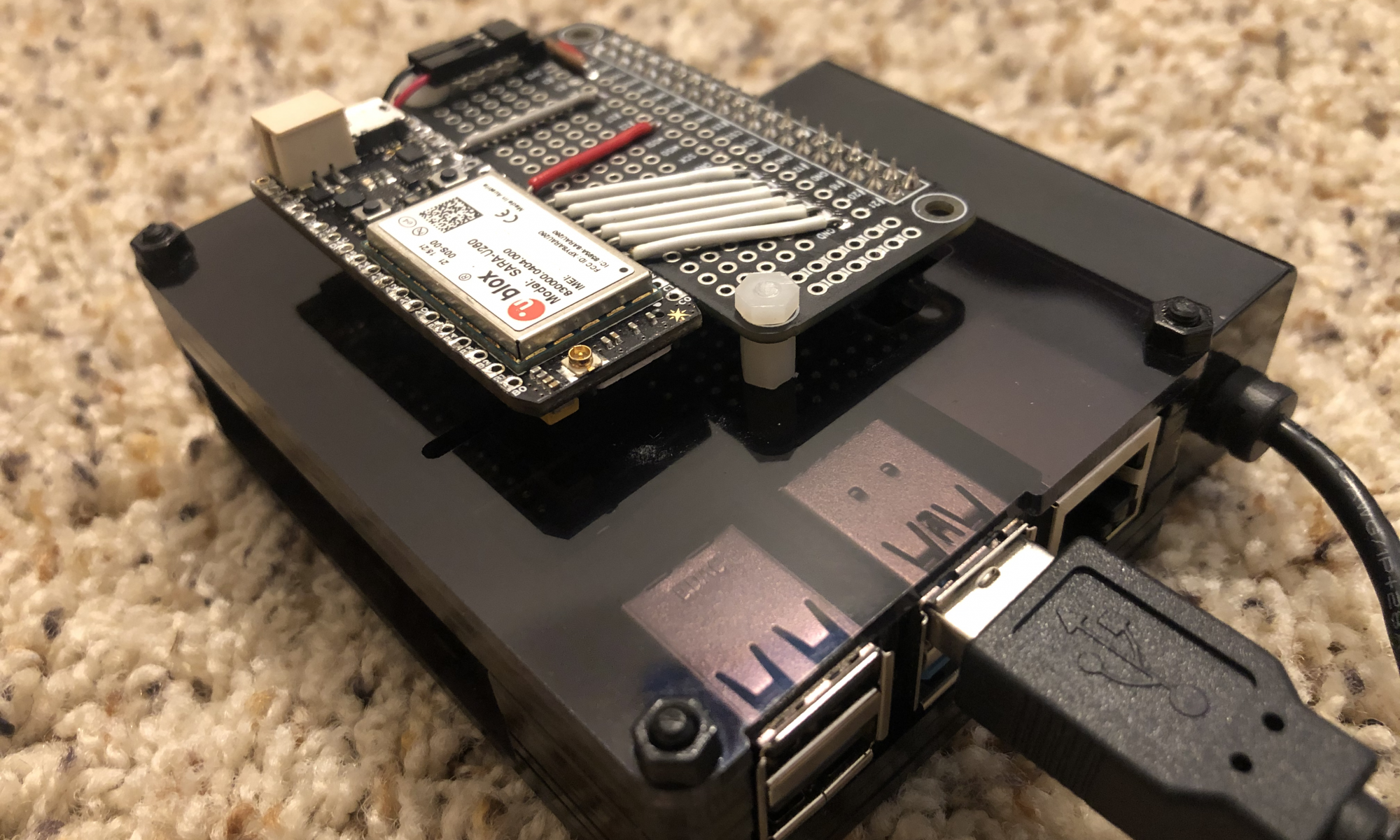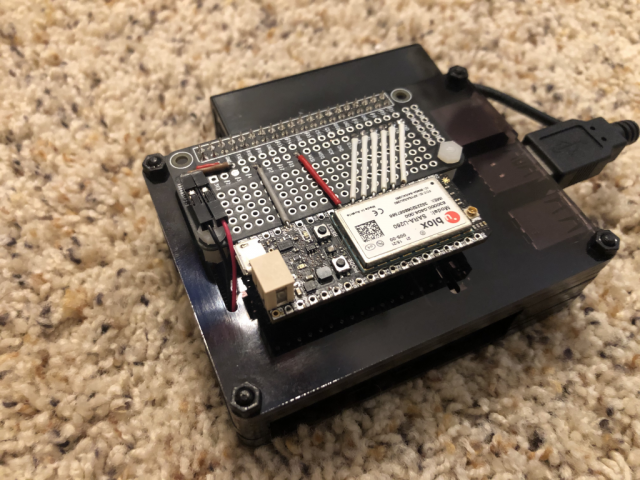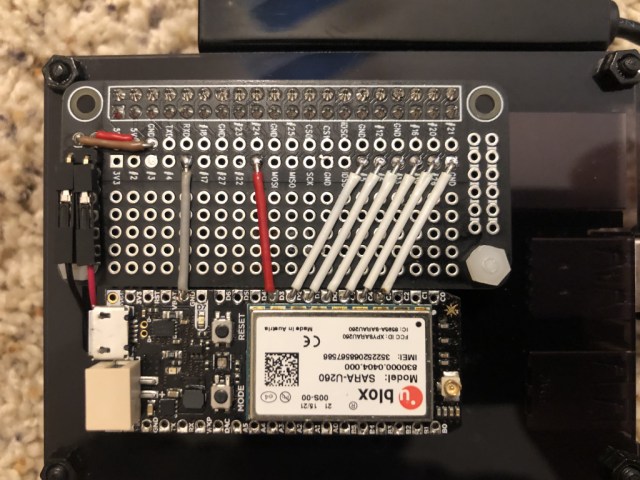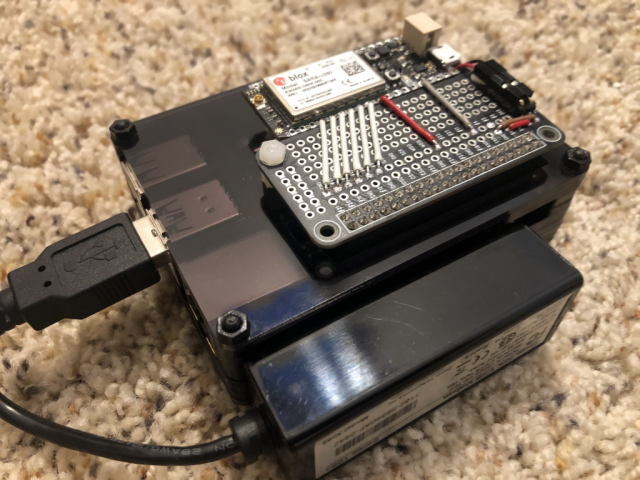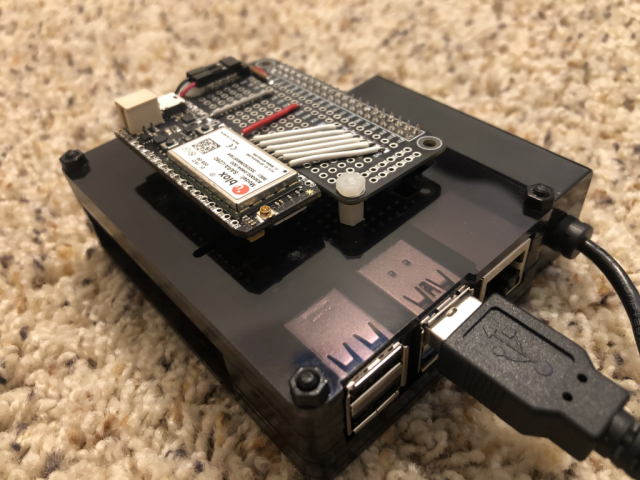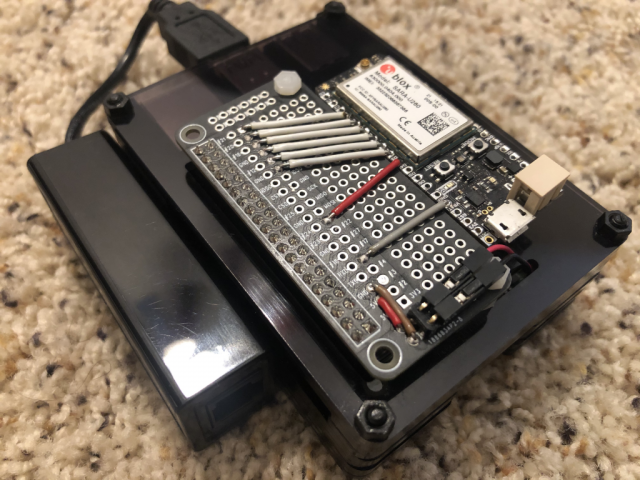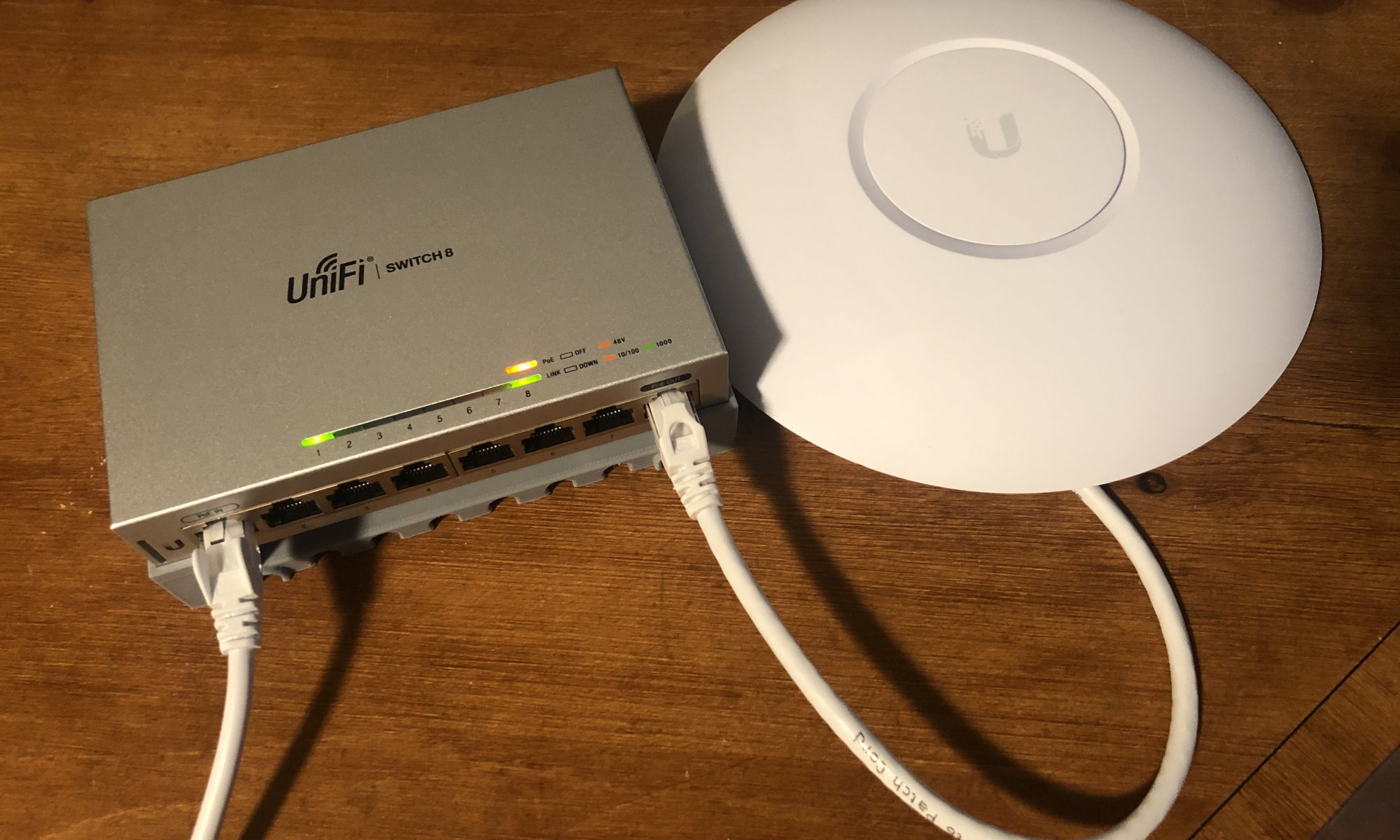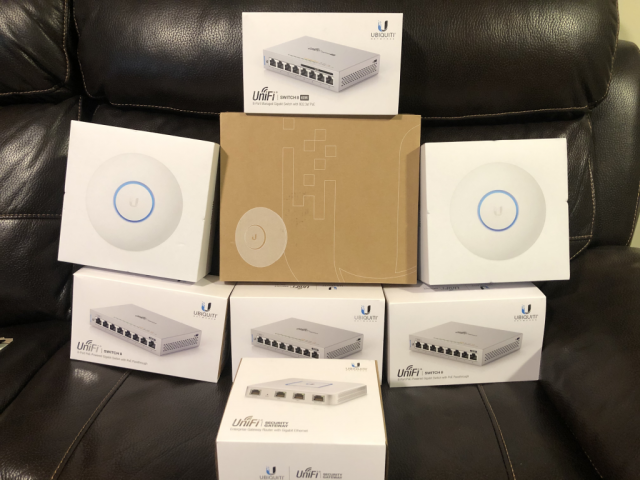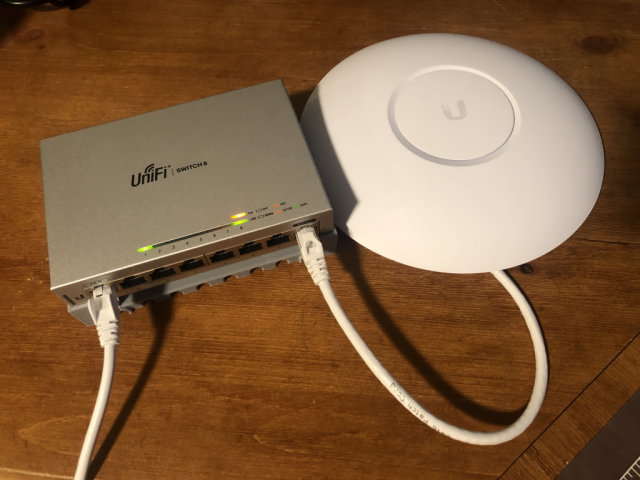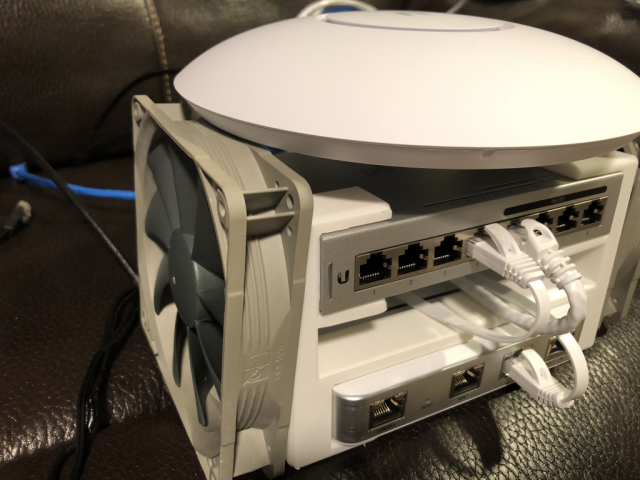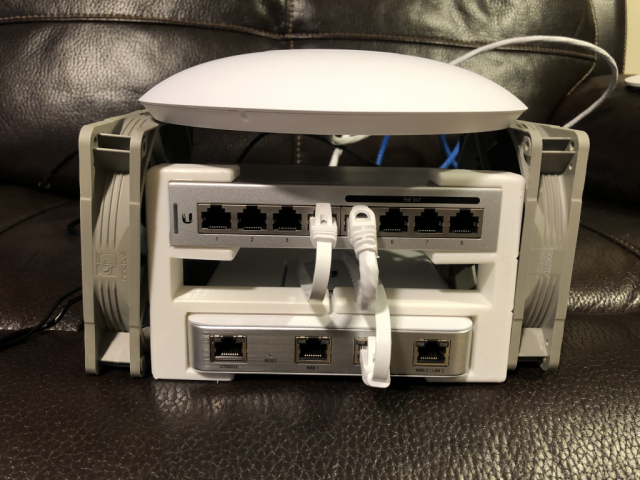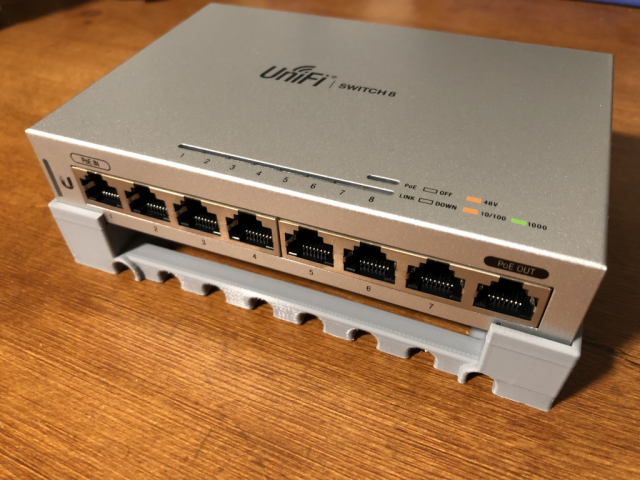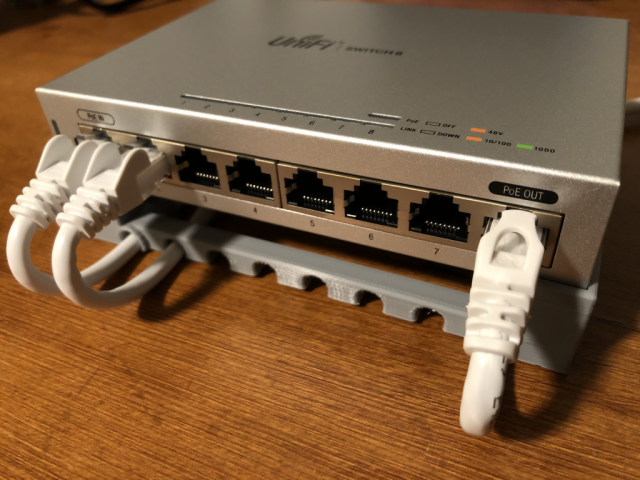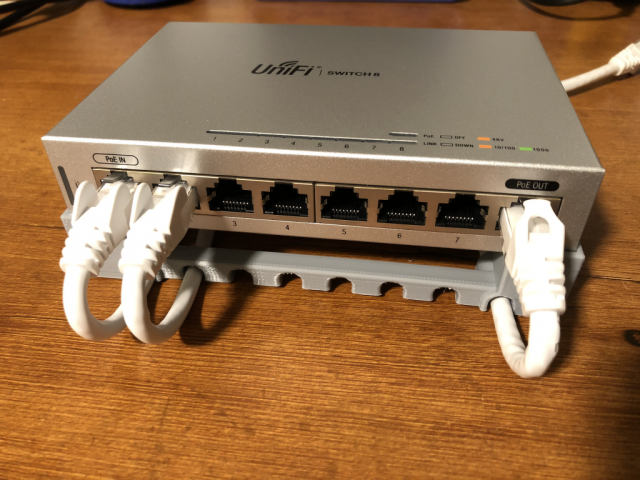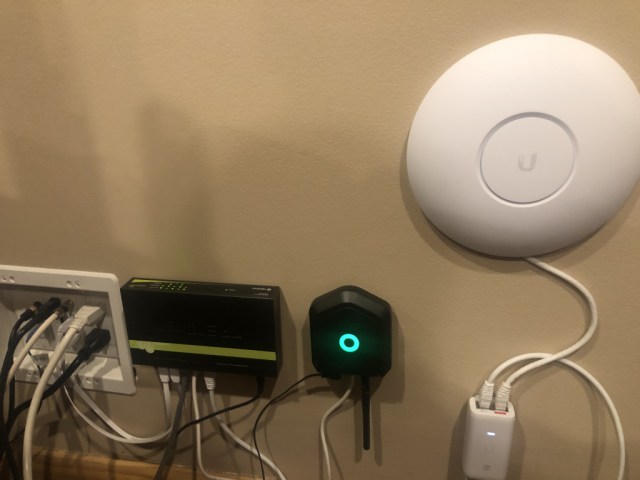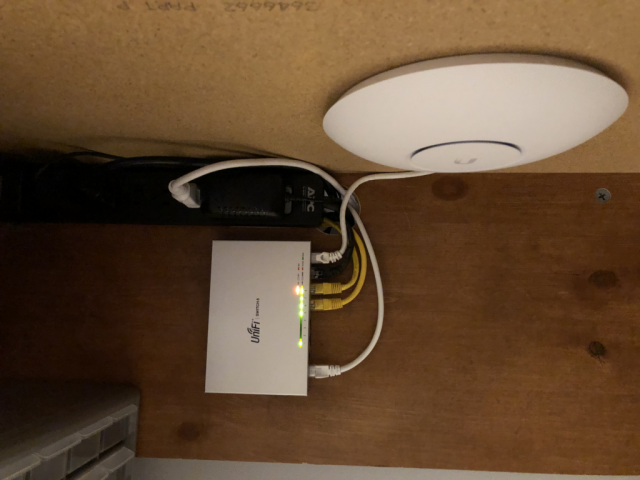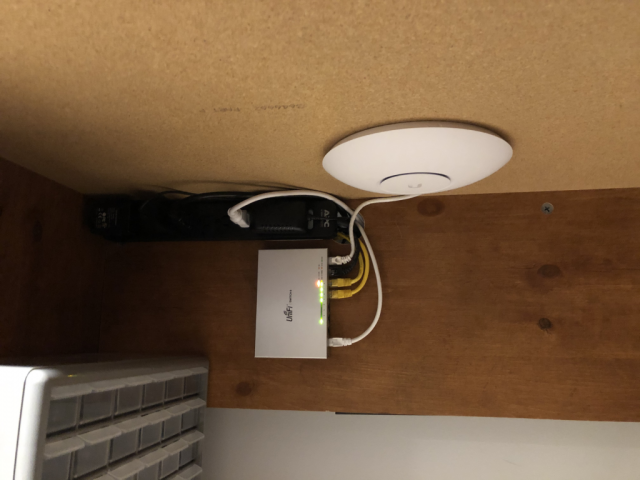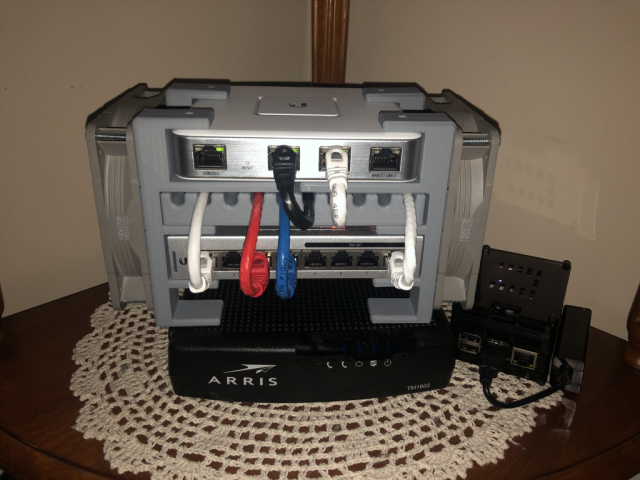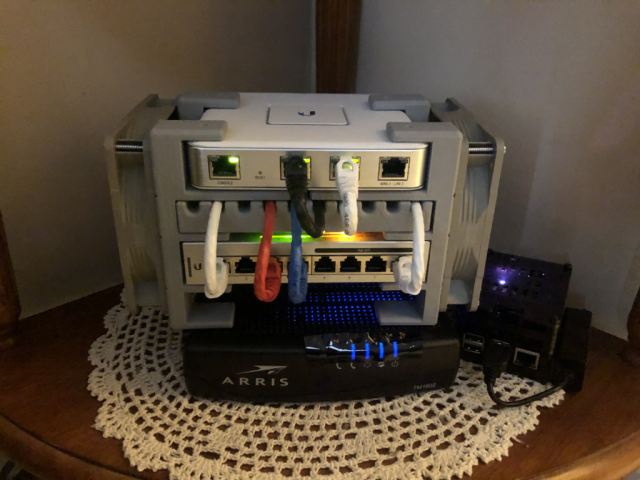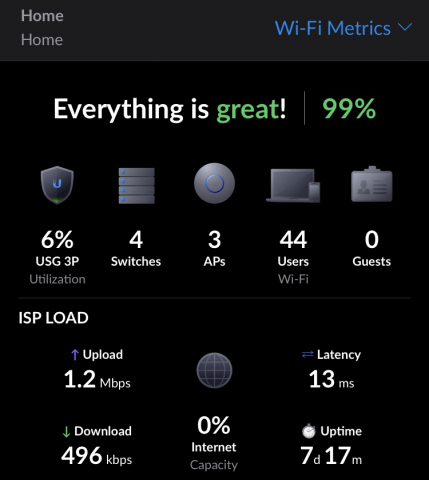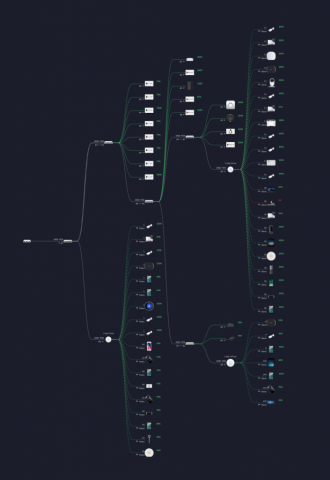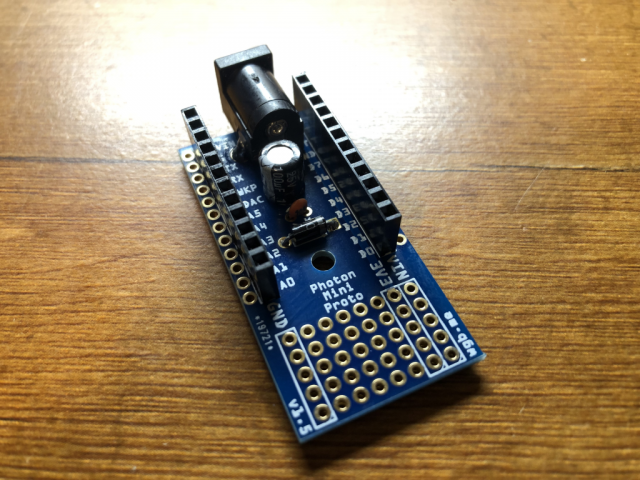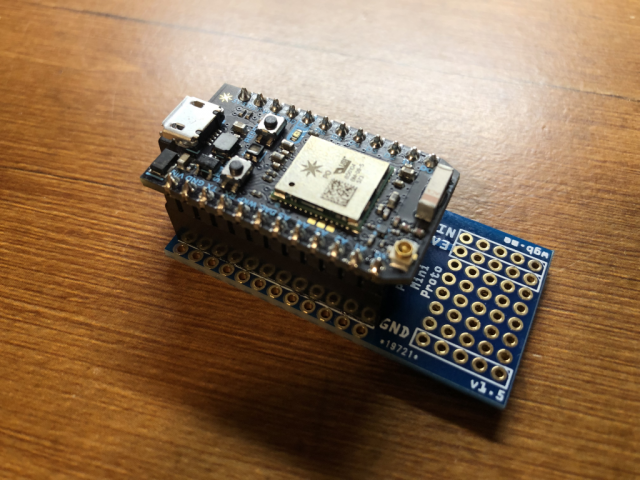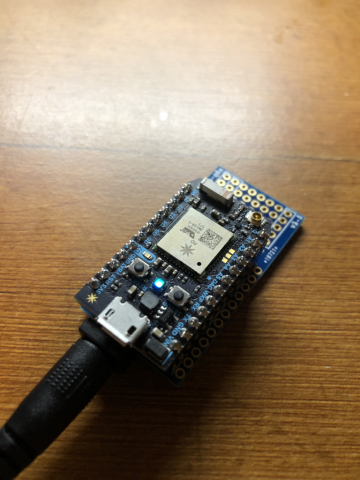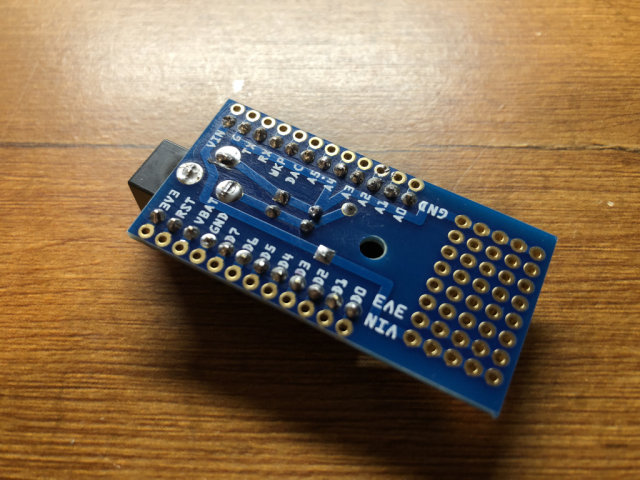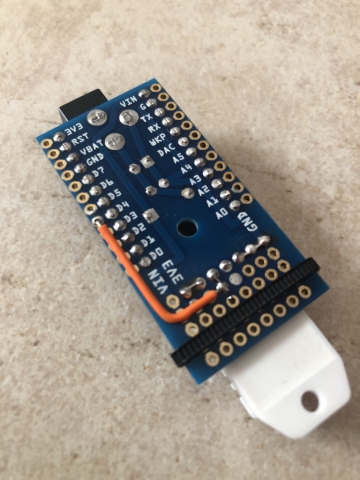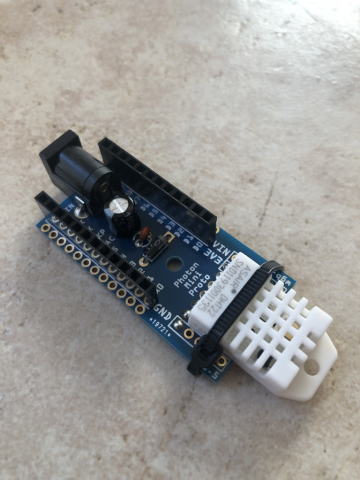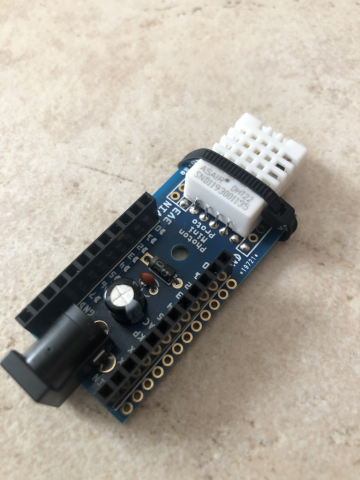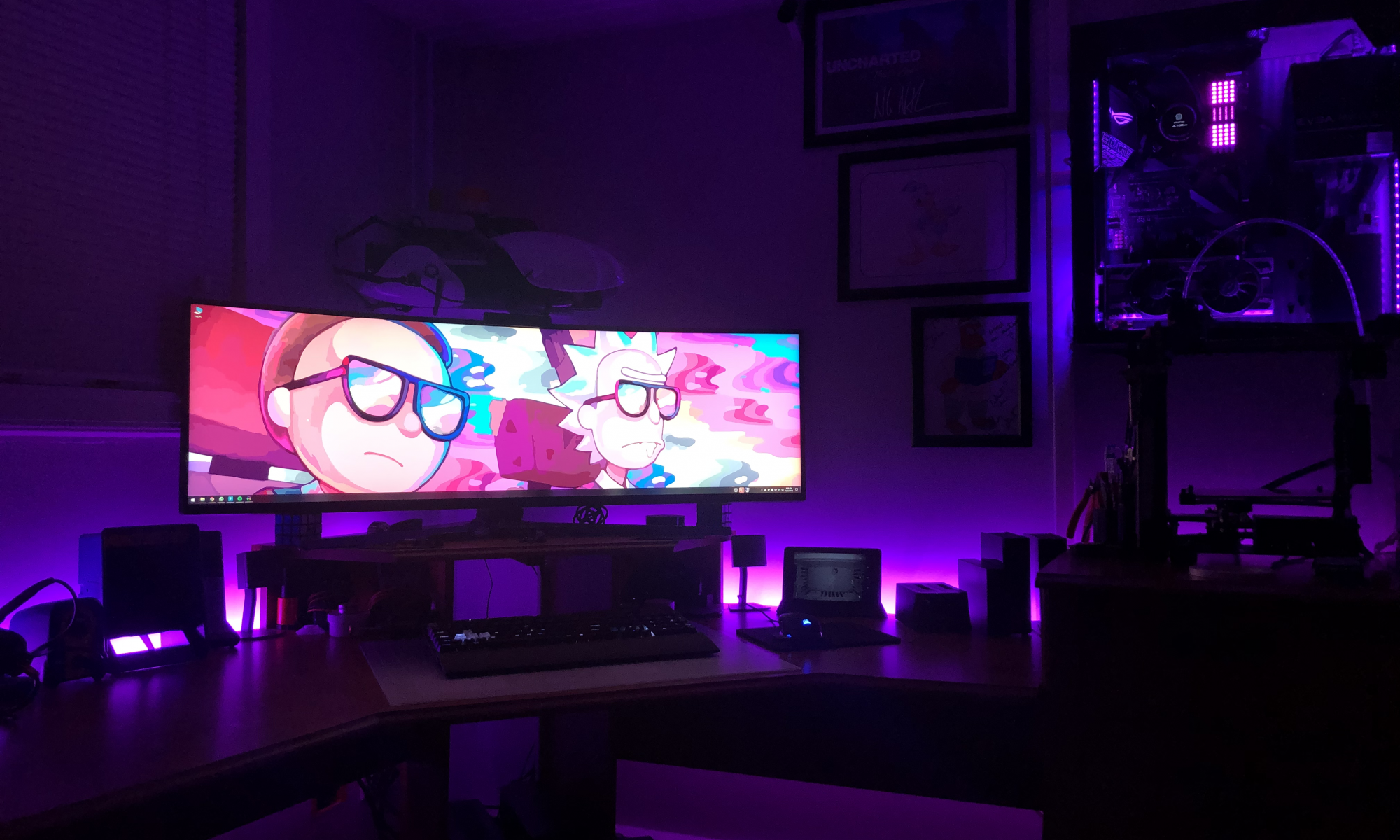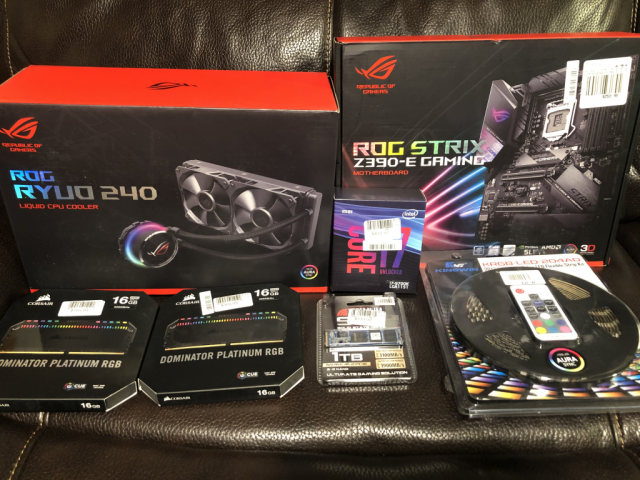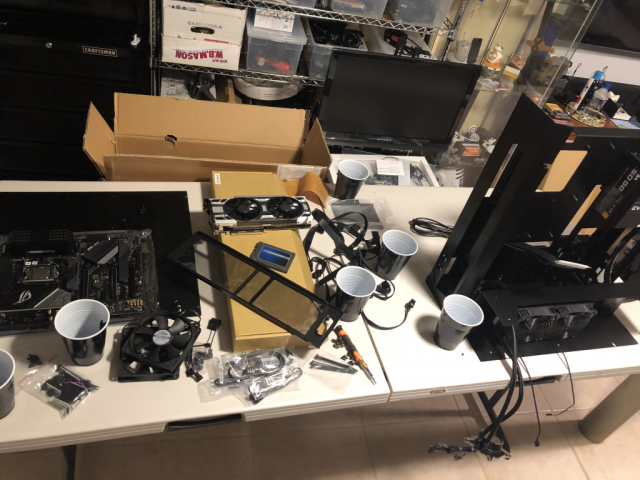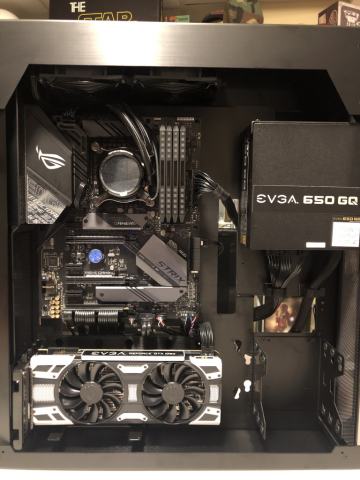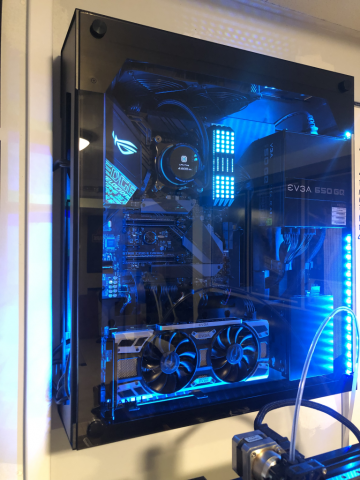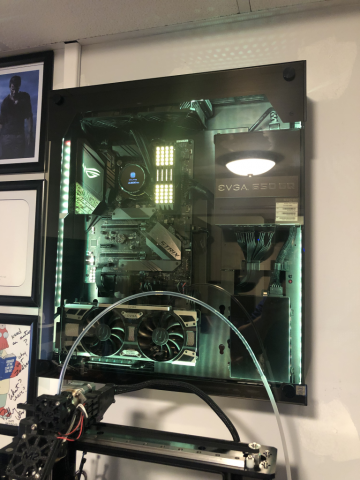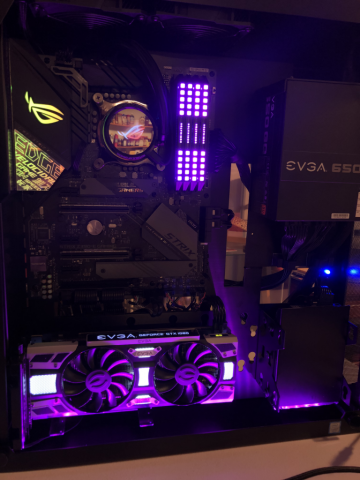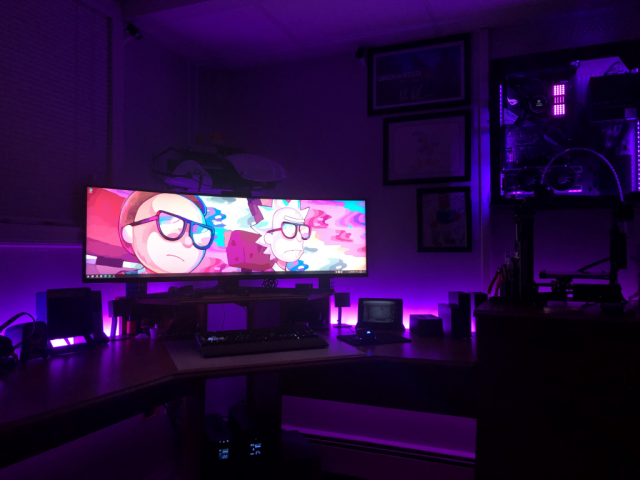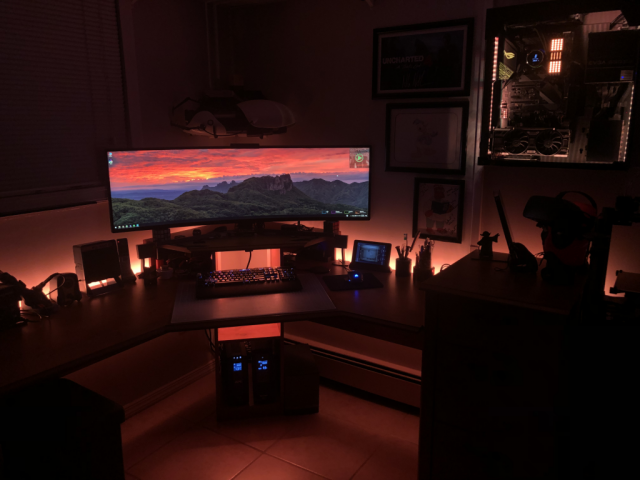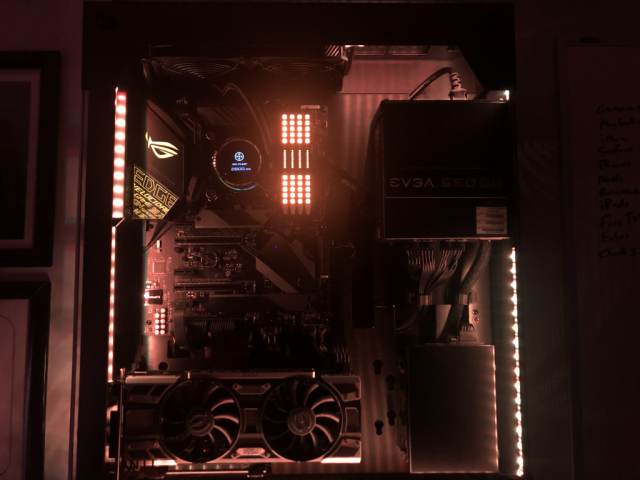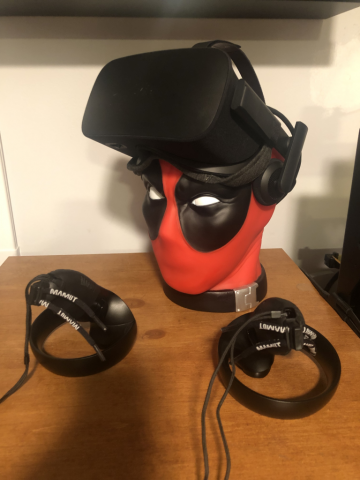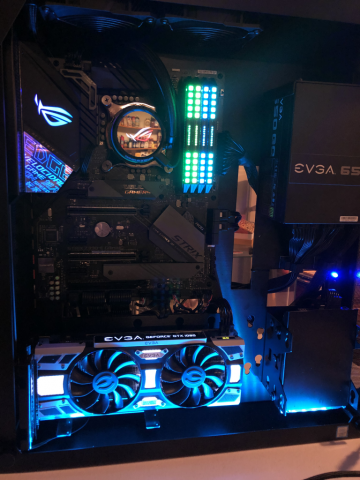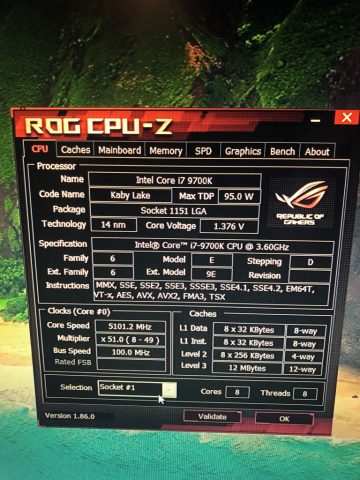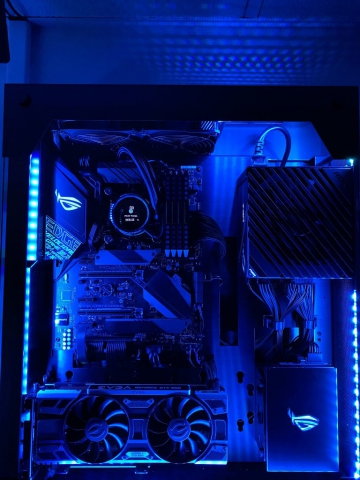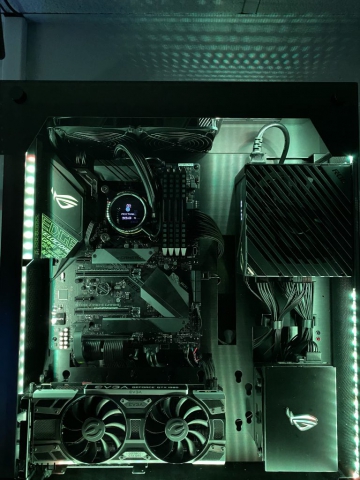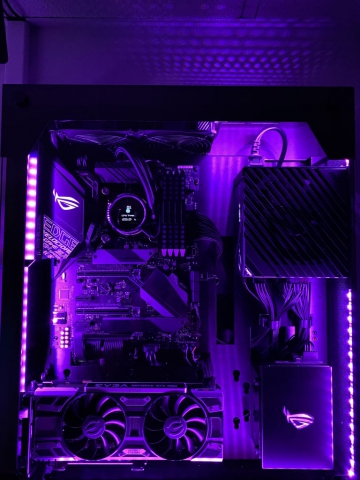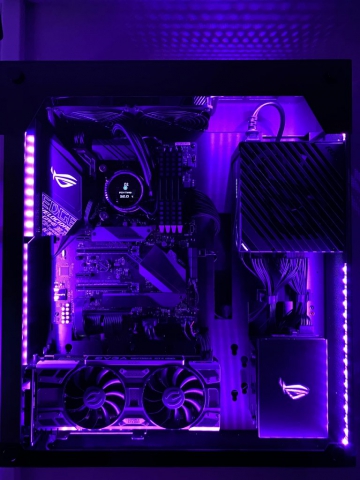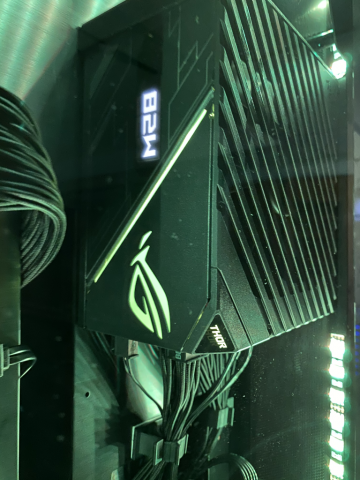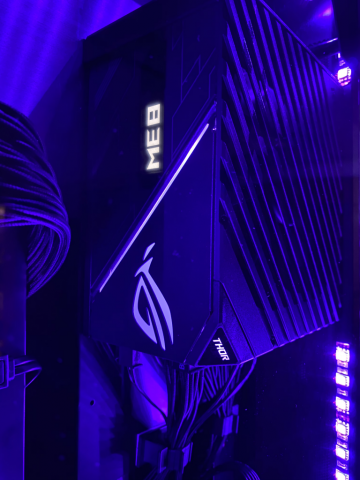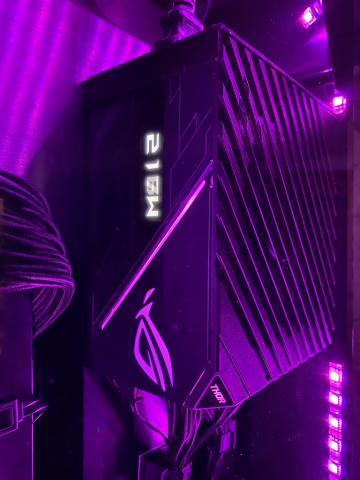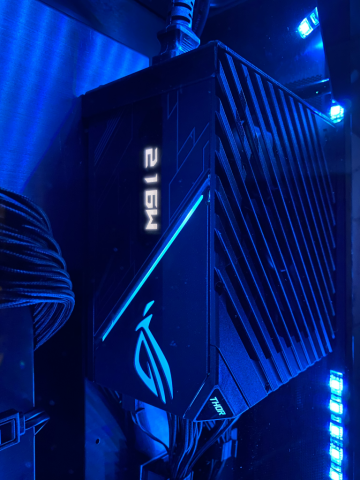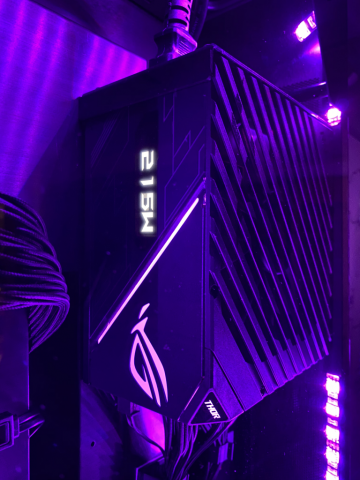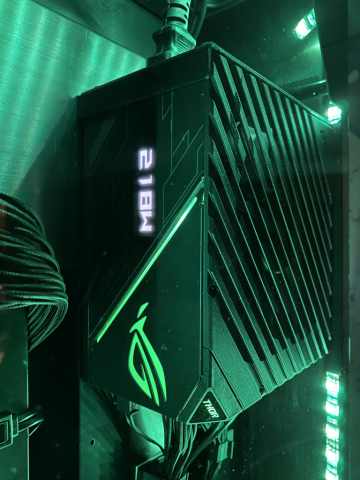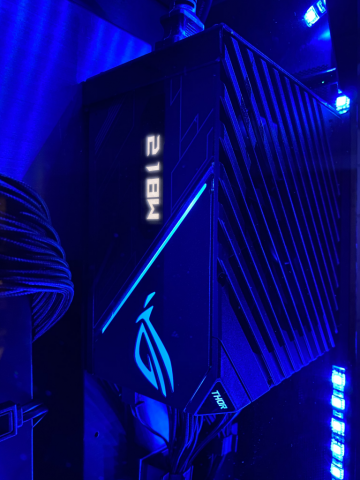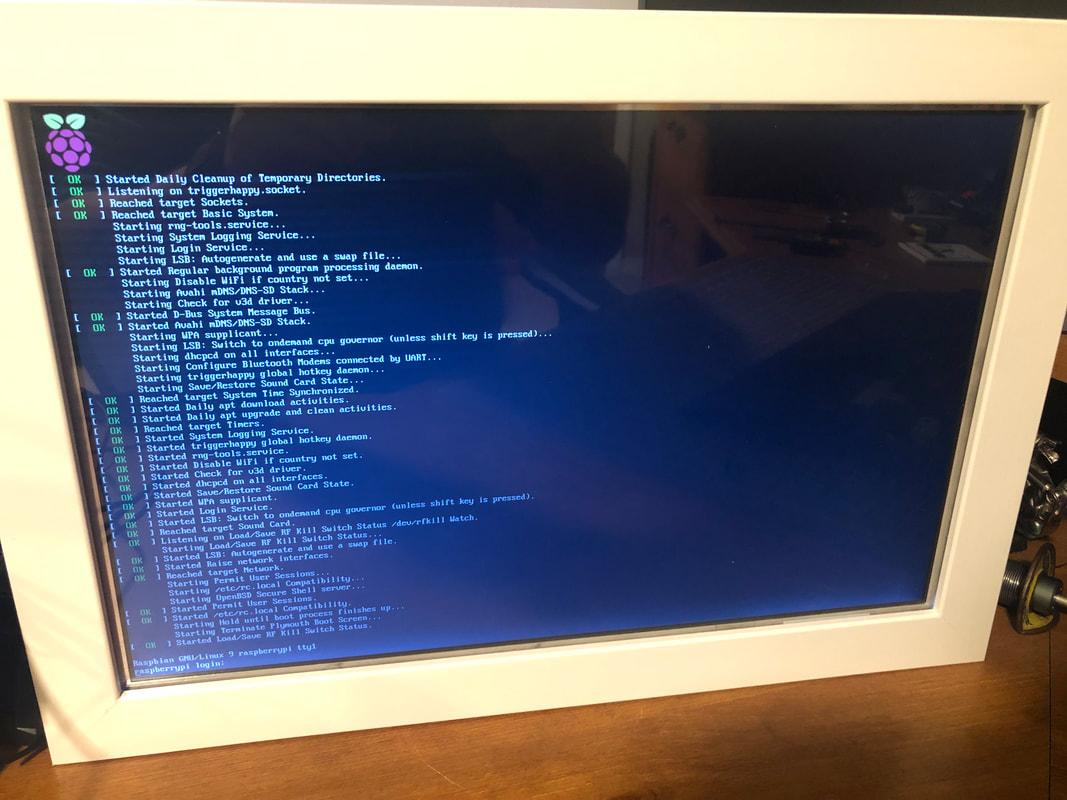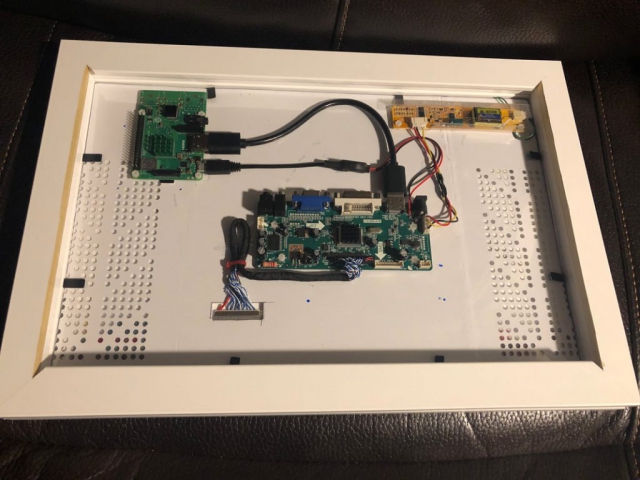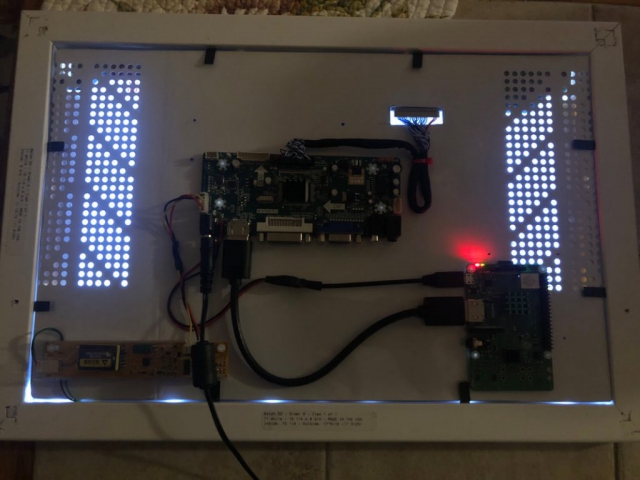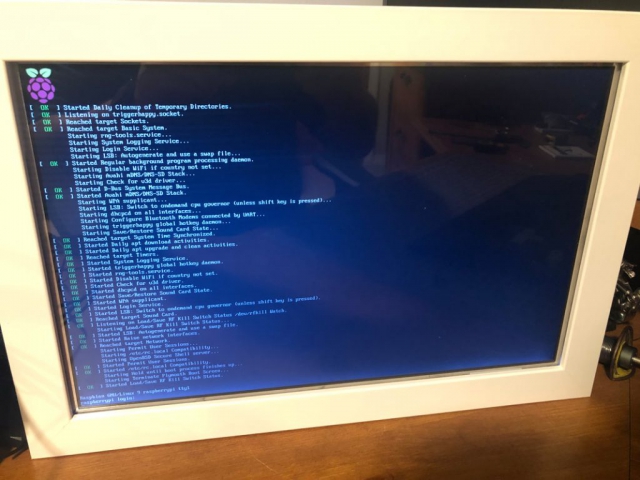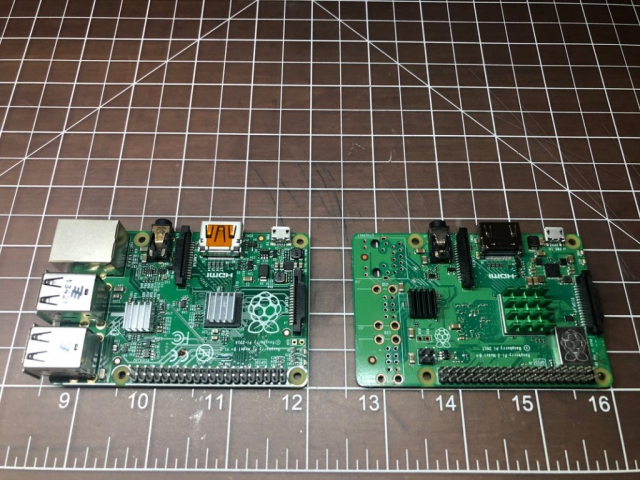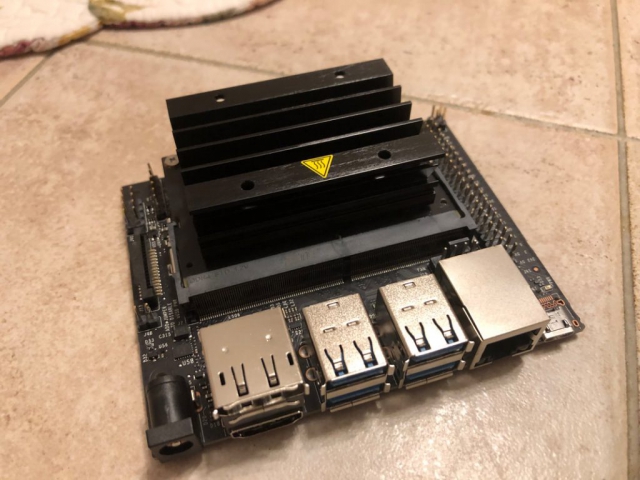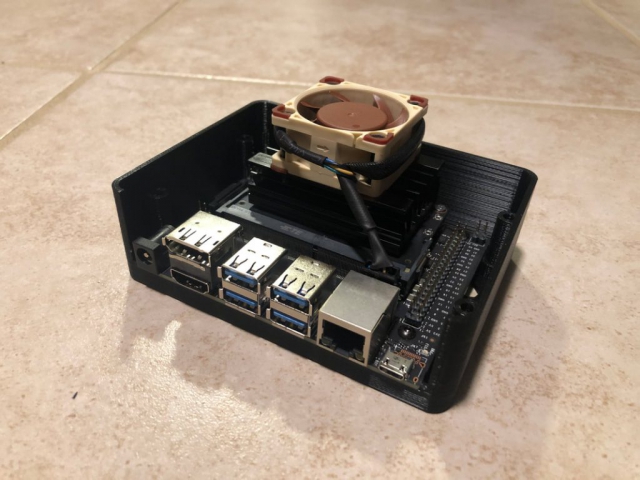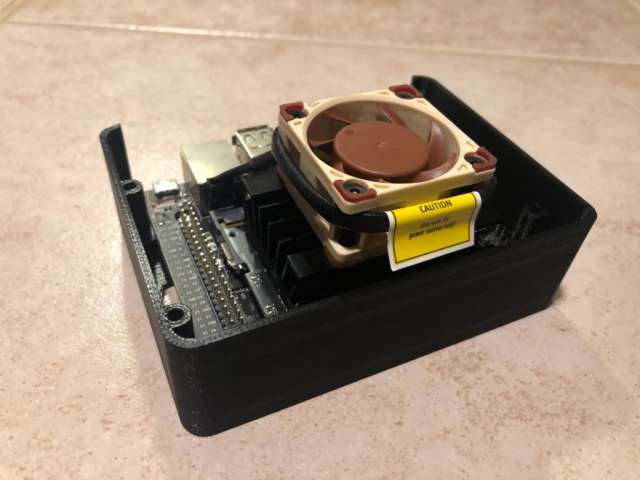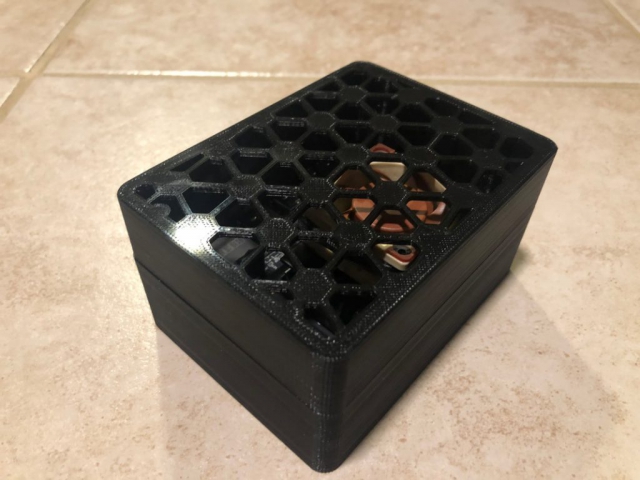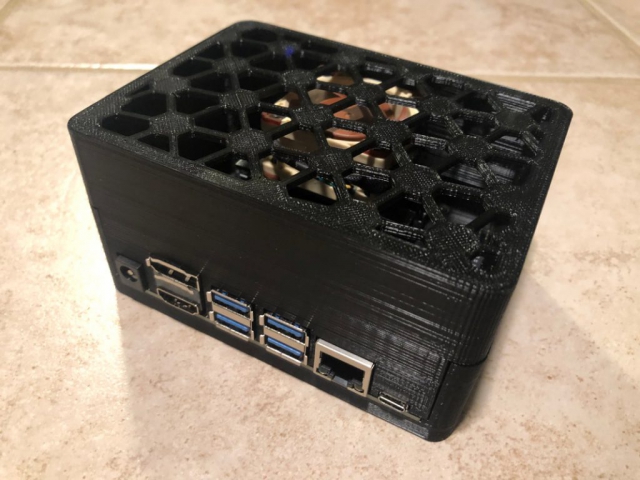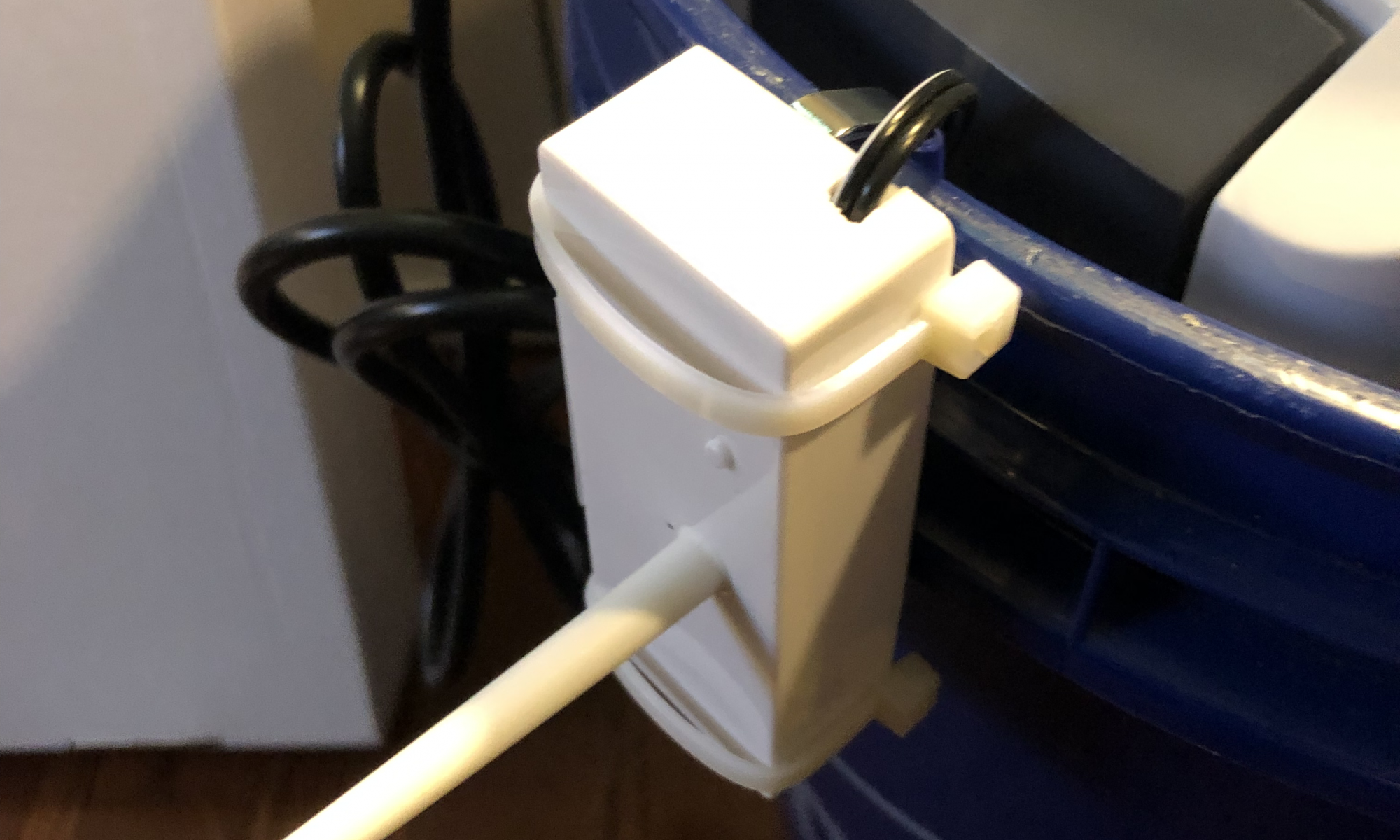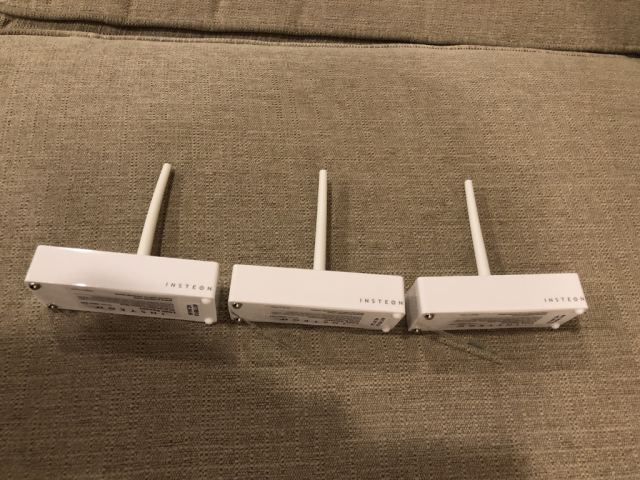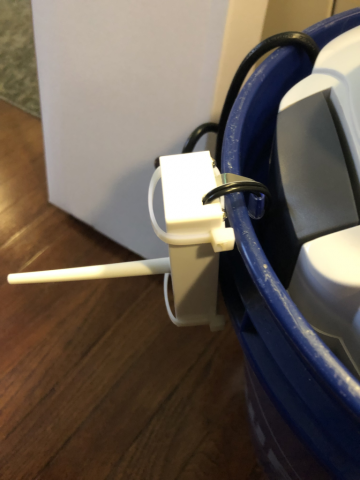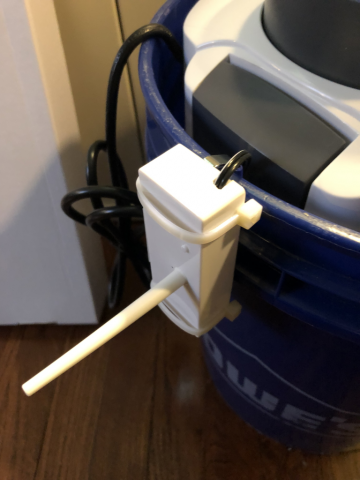I have a few bare metal servers that sometimes need a console hookup. Since they are in a closet, this causes a problem. Enter TinyPilot. Using a normal KVM and a Raspberry Pi, now I can remotely manage the servers via nginx.
BlueIris Server
Entryway Calendar / DakBoard (formerly PiMagicMirror)
The PiMagicMirror software left something to be desired, plus administration was a bit difficult. I also didn’t like the amount of heat that the screen I had previously built was generating. So I purchased a large Digital Picture Frame that had an HDMI input. I recessed the electrical box on the wall to hide the raspberry pi, and switched the software to Dakboard.com.
Pi Cellular 2.0
I’ve started upgrading all the Raspberry PIs in the house to Pi4. The Electron connected Pi was the first. This time around I soldered the Electron to a GPIO Proto board hat to make changing the hardware easier in the future. I also added this nice case and a fan inside. Unfortunately, I tried to run the Pi on POE but that caused issues with the GPIO pins that I couldn’t figure out.
Unifi
I had been looking at the Unifi Wifi and Unifi Network gear for a while and I finally thought it was the time to rip out the old networking equipment. We rely so heavily on the internet that it only makes sense to have the most robust and configurable network you can manage. Lucky for me, I have a lot of friends that can help when I get lost in show commands.
Temperature Sensors
A friend and coworker started to get into Ardunio once I showed him the Particle line of devices. He had the SoC on a Breadboard with wires going from the pins to the temperature sensor. I found these ProtoBoards for a few dollars each and offered to solder them.
New PC
I like to wait a generation before upgrading my PC at home. I know I’m not on the cutting edge that way, but I get a pretty nice discount on the hardware and mostly the firmware and software has the bugs worked out. This PC is the top of the line for the last gen hardware and it was well worth the wait. Deadpool holds on to the VR HMD.
Pi Magic Mirror
Nvidia Jetson Nano Plex Server
Leak Sensors
While I’m confident that my canister filters are pretty well sealed for my Aquariums, it’s always nice to have peace of mind. I placed the filters in Lowes buckets to try and catch any leaks as they happen but I realized that the area for that water was not enough if the tank gravity fed out the water. I added Insteon Leak Sensors and some sensor wire extensions to monitor the buckets. This way I can get an email that my house is about to be flooded.

